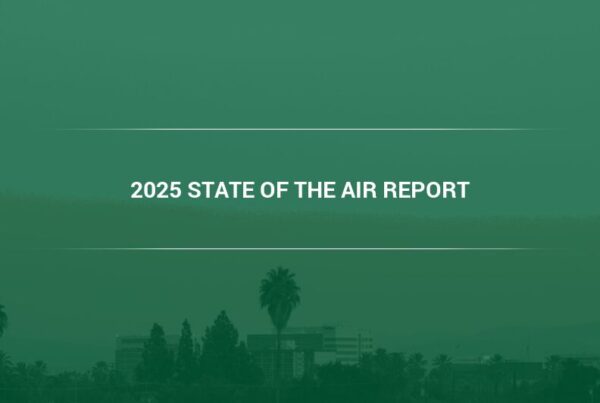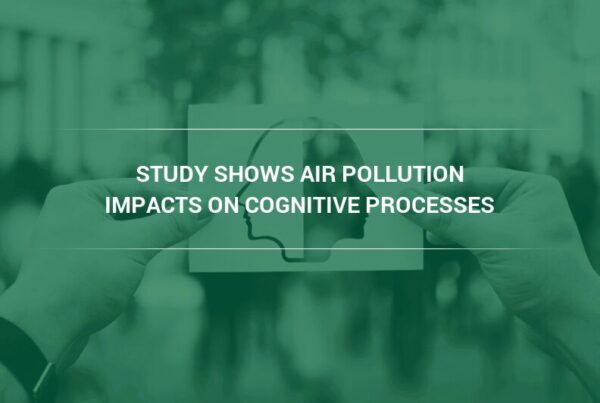When people think of human rights, they often think of things like life, liberty, happiness, food, and water. Yet it is time to start thinking of clean air as a human right. After all, clean air is necessary for a person to live, so it is inextricably woven into the human right to life. Air pollution kills millions of people every year, but the enforcement of air pollution standards has helped save thousands of lives since they have been passed. How can we encourage stricter air pollution standards? Stricter air pollution standards could be achieved by framing clean air as a human right.
Air Pollution Damages People’s Health
Making a case for air pollution as a human right means being informed about how air pollution damages people’s health. Air pollution creates millions of cases of hospitalizations and deaths from diseases associated with pollutant exposure every year. The pollutants that do the most damage to human health are what the EPA refers to as criteria air pollutants.
The EPA’s criteria air pollutants are: particulate matter, sulfur dioxide, nitrogen dioxide, carbon monoxide, ozone, and lead.
Particulate matter refers to tiny particles, some smaller than 2.5 microns across. They are a mixture of both solid and liquid particles, and because they are so small they can penetrate into people’s lungs and bloodstreams, doing substantial damage to people’s respiratory system. Particulate matter exposure has been correlated with higher rates of lung cancer.
Both sulfur and nitrogen dioxide are clear gases which are released by the combustion of fossil fuels in industrial furnaces and by vehicles. These airborne pollutants can lead to conditions such as chronic bronchitis, and irritation of the eyes, nose, and throat.
Ozone is created through the interactions of volatile organic compounds with heat and sunlight. It can lead to the exacerbation of asthma, and possibly the development of asthma and other respiratory ailments.
Lead and carbon monoxide is particularly dangerous to people. Carbon monoxide exposure can kill people very quickly by depriving people of the oxygen they need, and lead can damage people’s entire nervous system, kidneys, and brains.
Good Air Quality Should Be A Human Right
Good Air quality should be a human right because it is impossible to stop one person or company’s air pollution from harming other people. Air pollution distributes itself out into the air, making it a problem for not just people in the immediate area of the pollution, but for people in other areas as well.
According to estimates from the World Health Organization, air pollution kills around 4.6 million people a year. The diseases that harm people include diseases like emphysema as well as heart and lung diseases. Preventing these air pollution-related diseases from harming people is possible through regulation and technological innovation, but convincing governmental bodies and industry to invest in the reduction of air pollution is often difficult.
It is necessary to portray clean air as a human right because it will motivate people to pursue improvements in the quality of air around the world.
A recent report from the Seattle Journal of Environmental Law says we need to paint the fight for clean air as a fight for human rights, as doing so will make policymakers pay more attention to air pollution issues. Both governmental bodies, as well as industrial companies, pay more attention to human rights issues than issues that are perceived as having less to do with human well-being. Failure to pay attention to human rights issues often results in public backlash, which means there are stronger incentives to pursue human rights issues.
If clean air is categorized as a human right, it also creates a perceived relationship between clean air activists and society as a whole.
Establishing Clean Air As A Human Right
Establishing clean air as a human right involves promoting clean air through a combination of emissions regulations and technological innovations. Standards created to limit emissions can be backed by technologies that make the reduction of air pollution emissions easier and less effortful.
Constructing positive incentives for politicians to pursue air pollution regulation can lead to the creation of stricter air pollution standards. If clean air is seen as a human right, politicians who fight for reductions in air pollution will be seen as fighting for the benefit of society. It is also important to recognize that reducing air pollution will save the economy money on healthcare costs, which is an extra incentive to reduce emissions of air pollution.
“Air pollution standards can be met more easily if pollution reduction technologies are invented and improved upon,” says Kevin Wood, Vice President Sales & Marketing at Camfil USA
. “Pollutants from motor vehicles are one of the primary contributors to air pollution, so investing in less polluting vehicles like electric or hybrid cars can greatly reduce air pollution levels.” (3)
More efficient home appliances like air conditioners can also cut down on energy demands and by extension the air pollution that comes from power plants. Alternative forms of energy like solar energy should also be considered. Air pollution from industry smokestacks can be reduced through the creation of more efficient air scrubbers and emissions capturing devices.
It is extremely important to contextualize clean air as a human right, as it is one of the most effective ways to begin the reduction of air pollution around the world.
Camfil can help you promote clean air as a human right. Contact Camfil now to learn how you can contact politicians and advocate for clean air. Camfil can also provide you with industrial grade air filter products that can protect you from indoor air pollutants.
SOURCES:
- https://www.epa.gov/criteria-air-pollutants
- http://digitalcommons.law.seattleu.edu/cgi/viewcontent.cgi?article=1058&context=sjel&sei-redir=1&referer=http%3A%2F%2Fwww.google.com%2Fsearch%3Fq%3Dshould%2Bclean%2Bair%2Bbe%2Ba%2Bhuman%2Bright%26safe%3Dstrict%26hl%3Den%26gbv%3D2%26oq%3Dshould%2Bclean%2Bair%2Bbe%2Ba%2Bhuman%2Bright%26gs_l%3Dheirloom-serp.3…20173.33416.0.33514.58.43.12.0.0.0.386.4322.24j15j0j1.40.0….0…1.1.34.heirloom-serp..16.42.3359.WqtM2TO3deY#search=%22should%20clean%20air%20human%20right%22
- https://energy.gov/eere/electricvehicles/reducing-pollution-electric-vehicles



